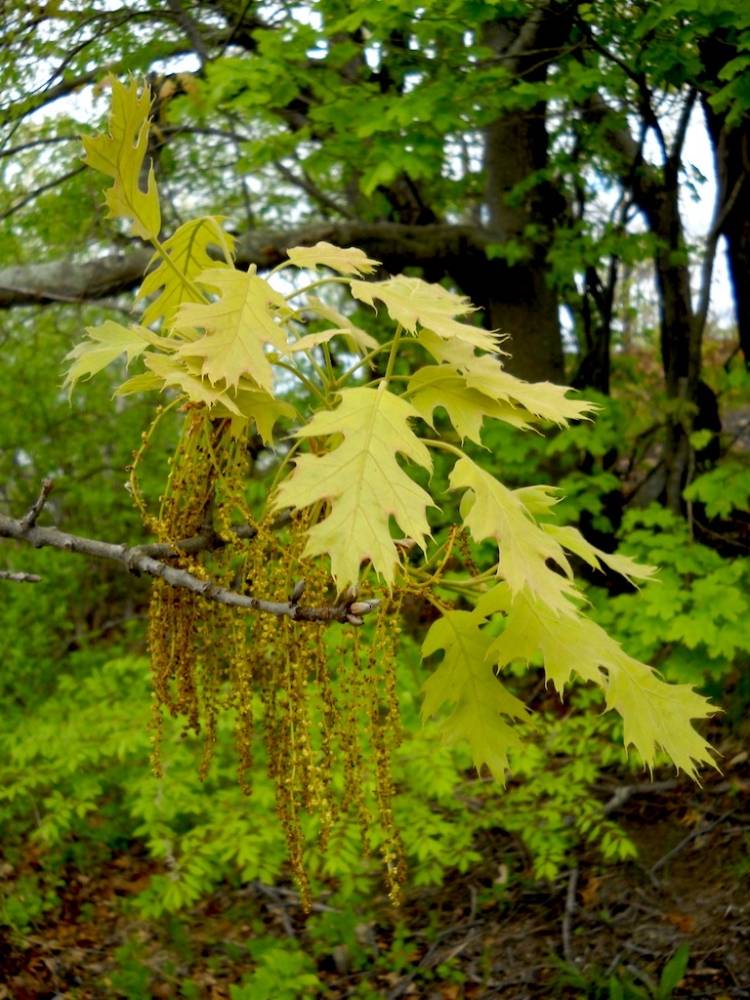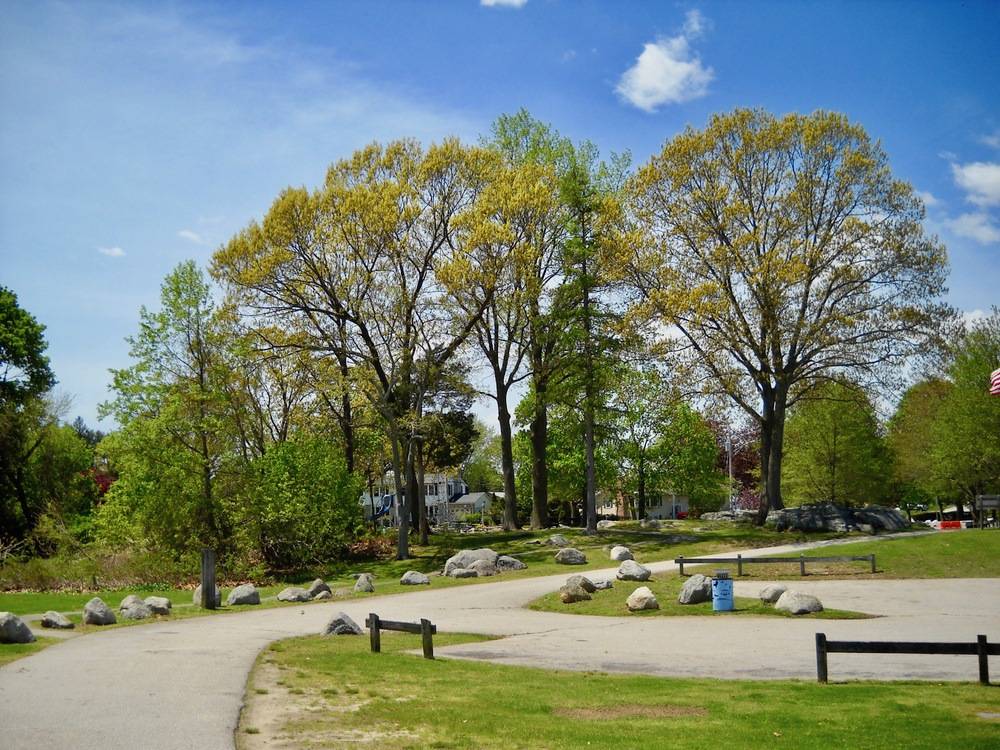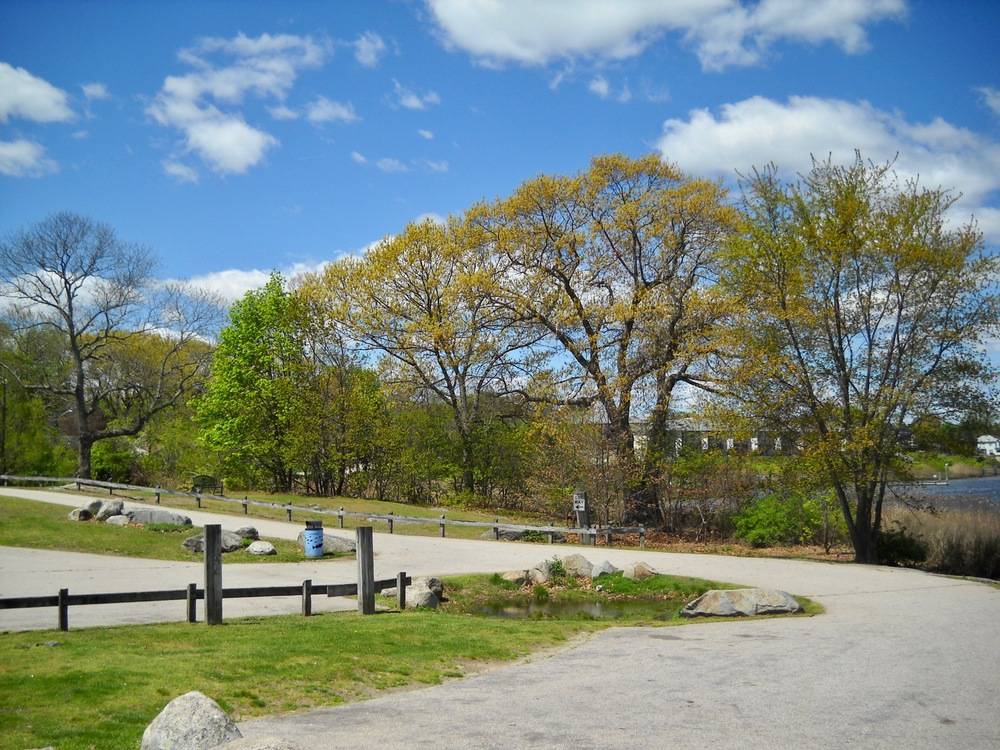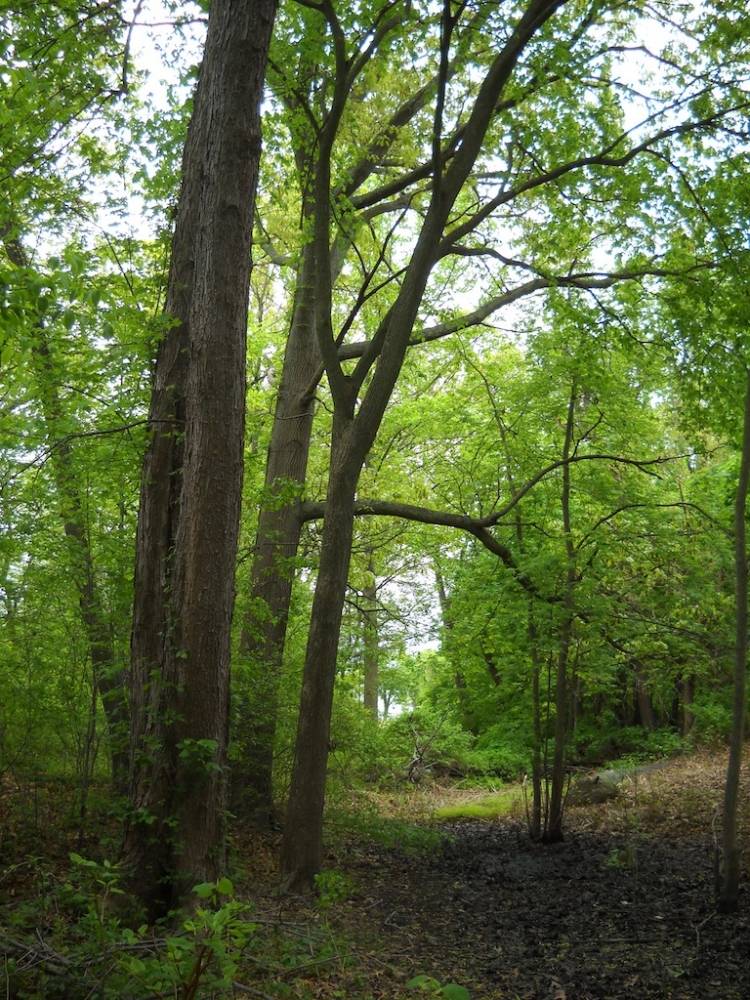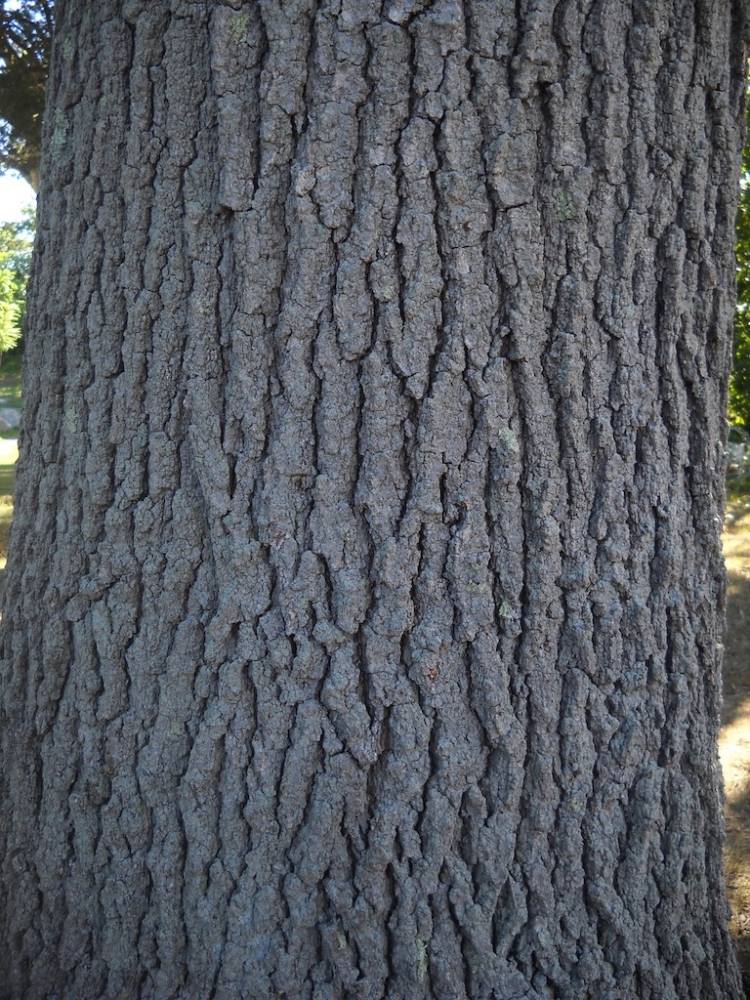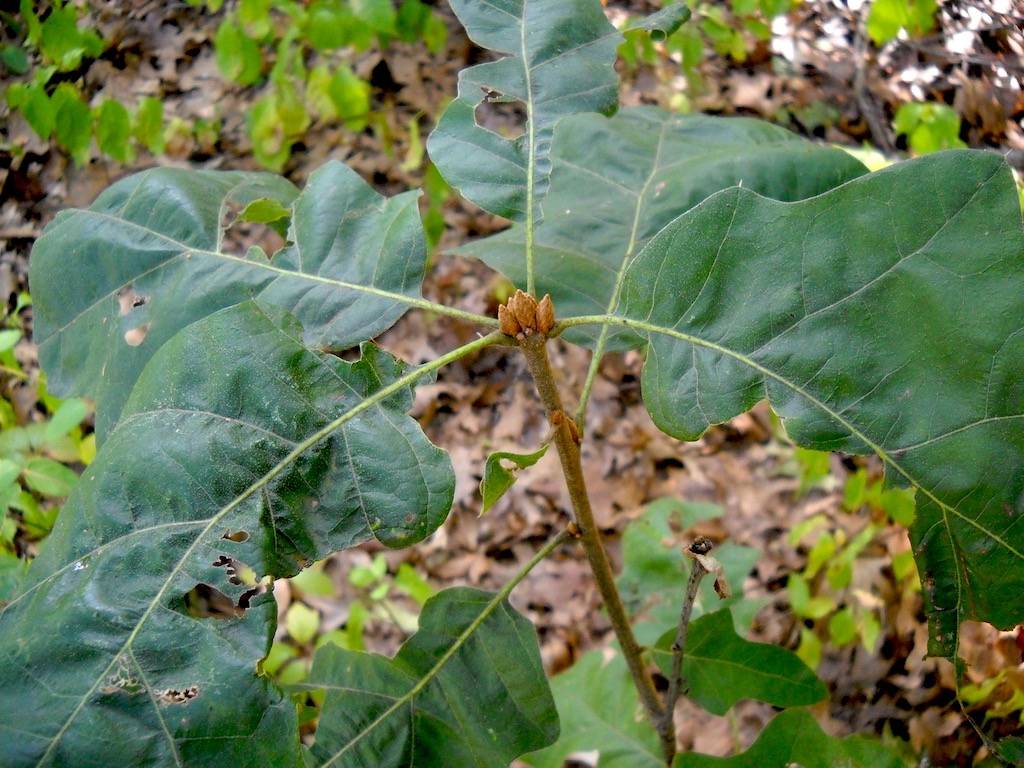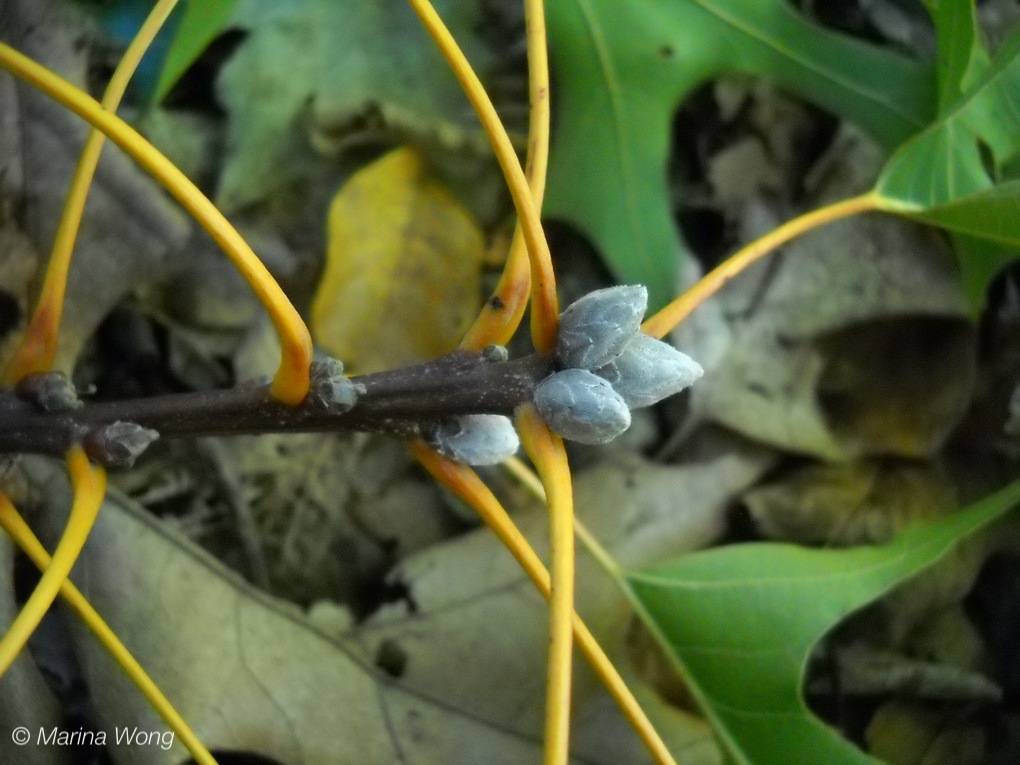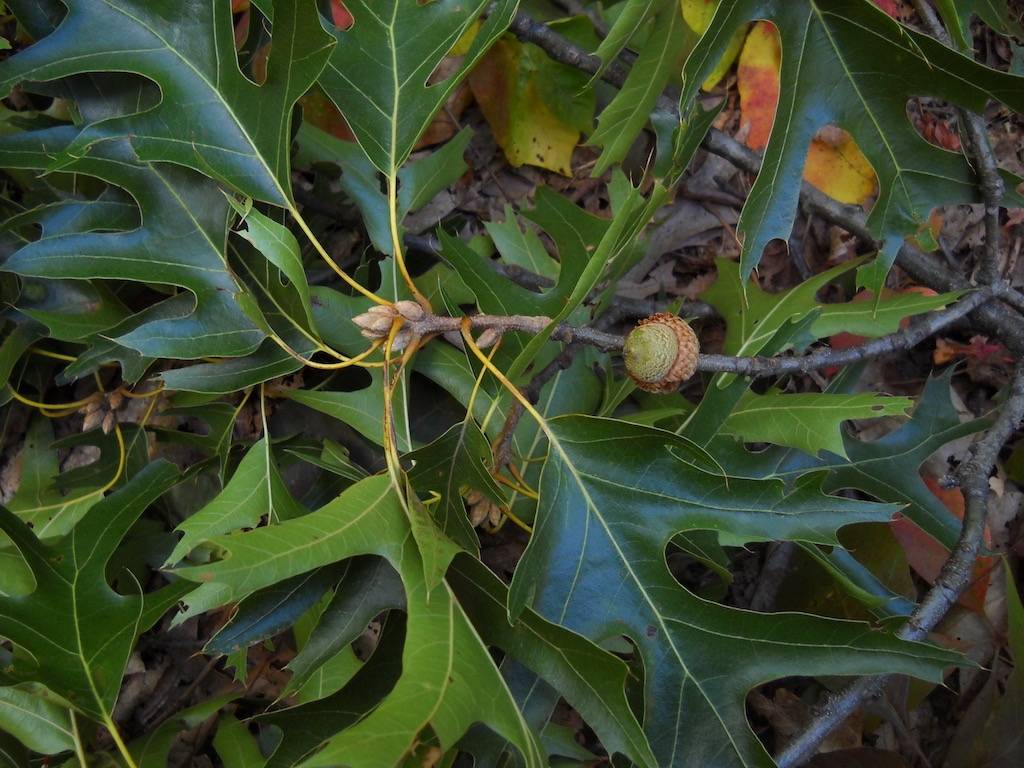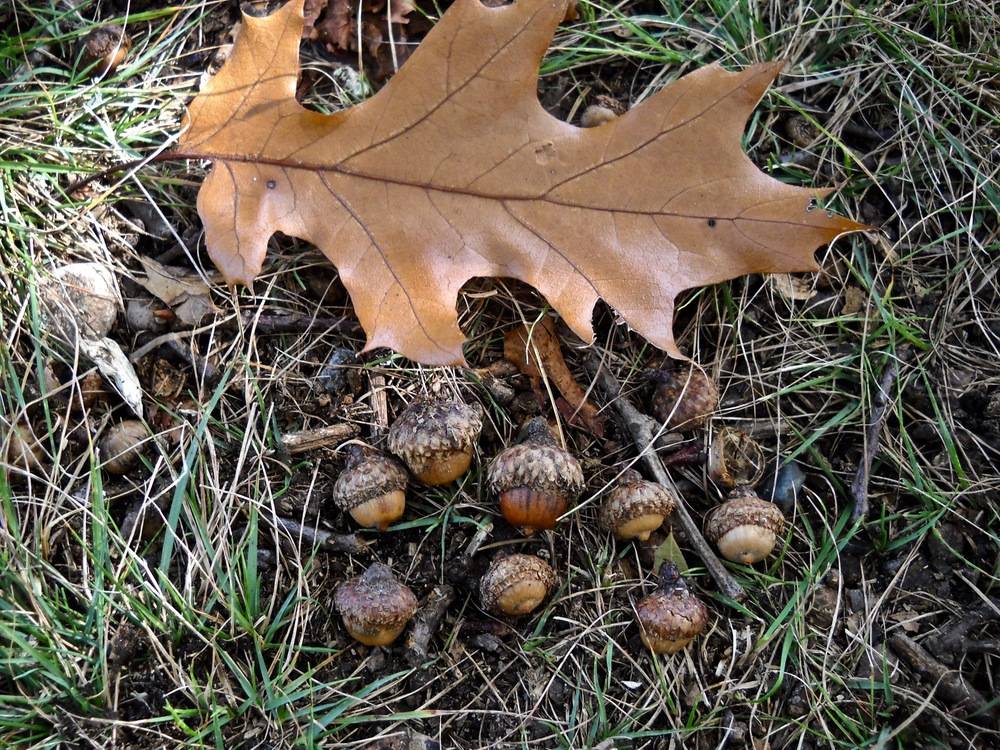black oak
Black oak is a hardwood tree native to central and eastern North America. It can grow on poor dry soils to a large size, with a trunk diameter of 3 and a half feet. It has a deep taproot that contributes to its survival in poor growing conditions. The velutina part of its scientific name comes from the Latin word that means fleece, wool or down and refers to the velvety winter buds and downy young leaves.
There are two very large black oaks growing in the glacial substrate of the Upland Trail at U4 and U5. Large individuals are also found along the Pond Trail as well as in the vicinity of the playground and parking lot.
Its wood is valued for crafting furniture and flooring. Its acorns are an important food source for squirrels, white-tail deer, mice, voles, turkeys and other birds.
Besides using the bark and wood in furniture and basketry, Naive Americans used various preparations of the astringent bark as a tonic, or to alleviate asthma, chapped skin, cold symptoms, dysentery, female troubles, fevers, hoarseness, indigestion, lung troubles, and sores in the mouth and elsewhere. The acorns were used to make flour and the leaves were used to wrap dough for bread-making.
For more information:
https://gobotany.nativeplanttrust.org/species/quercus/velutina/
http://dendro.cnre.vt.edu/dendrology/syllabus/factsheet.cfm?ID=39
http://www.florafinder.com/Species/Quercus_velutina.php
https://www.uky.edu/hort/Black-Oak
http://naeb.brit.org/uses/search/?string=quercus+velutina
Coon, N. (1979). Using Plants for Healing. Rodale Press. p. 220.

